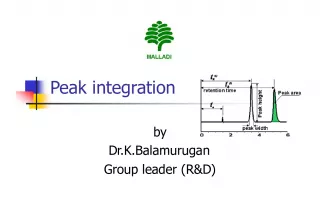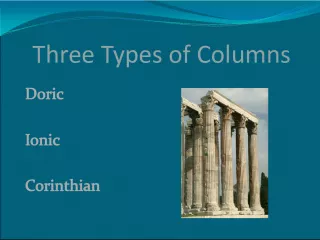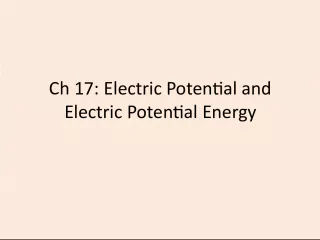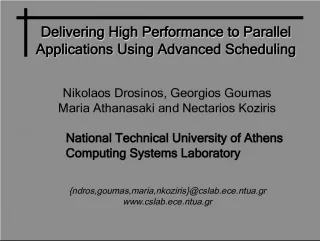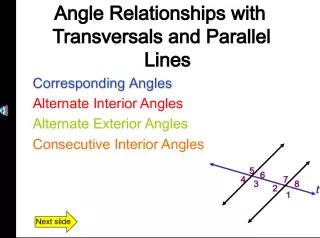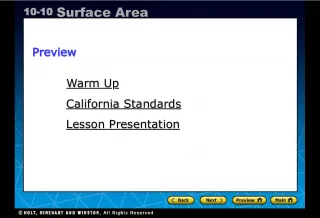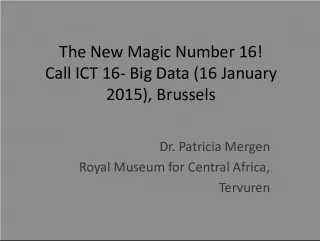Multidimensional Parallel Column Gas Chromatography
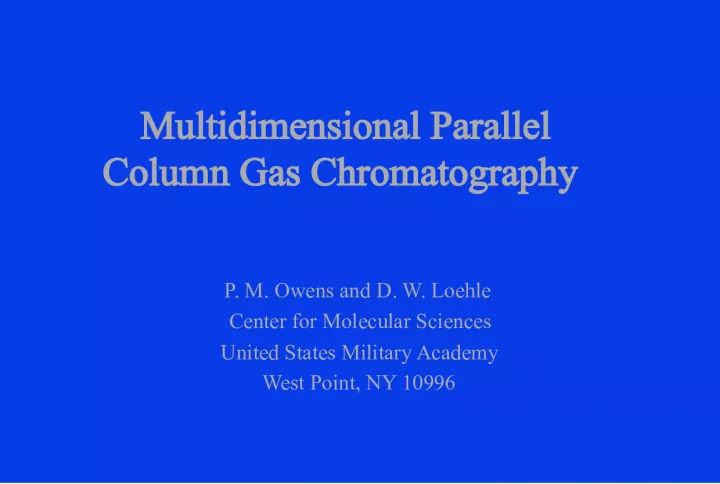

This article discusses the use of multidimensional parallel column gas chromatography systems in analytical chemistry. The systems involve various precolumns and analytical columns and are capable of determining retention time equations for accurate analysis of samples.
- Uploaded on | 1 Views
-
 karissayost
karissayost
About Multidimensional Parallel Column Gas Chromatography
PowerPoint presentation about 'Multidimensional Parallel Column Gas Chromatography'. This presentation describes the topic on This article discusses the use of multidimensional parallel column gas chromatography systems in analytical chemistry. The systems involve various precolumns and analytical columns and are capable of determining retention time equations for accurate analysis of samples.. The key topics included in this slideshow are gas chromatography, multidimensional, parallel column, precolumns, analytical columns,. Download this presentation absolutely free.
Presentation Transcript
1. Multidimensional Parallel Column Gas Chromatography P. M. Owens and D. W. Loehle Center for Molecular Sciences United States Military Academy West Point, NY 10996
3. Parallel Column GC Systems System 1 System 2 Precolumns 5m, 0.53mm HP1 15m, 0.50mm UAC-1 Analytical Columns 10m, 0.53mm HP1 15m, 0.25mm UAC-1 10m, 0.53mm HP17 15m, 0.25mm UAC-17 10m, 0.53mm HP20M 15m, 0.25mm UAC-CW
4. Retention Time Equations t r = t m + t m k t m = mobile phase hold-up time k = partition ratio t r = t r - t m t r = adjusted retention time k = (t r - t m ) / t m = t r / t m
5. Parallel Column Retention Equations Single analyte & 3 columns w / diff. stationary phases (SP) t r (SP1) = t m + t m k (SP1) t r (SP2) = t m + t m k (SP2) t r (SP3) = t m + t m k (SP3) The ks result from specific solute- stationary phase interactions and can therefore be used for solute identification
6. Retention Time Calibration Day 1 t IS (1) = t m1 + t m1 k IS Day 1 t AN (1) = t m1 + t m1 k AN Day 2 t IS (2) = t m2 + F * t m2 k IS Day 2 t AN (2) = t m2 + F * t m2 k AN F corrects for changes in k
7. Retention Time Adjustment t AN (2) / t IS (2) = t AN (1) / t IS (1) ( t = t r - t m ) Accounts for variations in t m s Accounts for linear variations in k (F factor)
8. Relative Retention ( ) Libraries A, IS = t A (2) / t IS (2) = t A (1) / t IS (1) Generate GC library to tabulate s for each compound on all stationary phases Run int. std. with all analyte & library runs Since s are T-dependent, run all samples with identical temperature programs
9. Search Algorithms Sum of differences Hit Metric = ( LIB ) SP Euclidean distance Hit Metric = [1- ( N, LIB )] SP and N, LIB are normalized vectors from set of s for each compound
10. Search Results HP20M HP17 HP1 Sum of differences Cyclooctane 1.85 1.77 1.46 Cyclooctadiene 1.93 1.93 1.49 1-Heptanol 1.84 1.84 1.58 Euclidean Search Cyclooctane 1.85 1.77 1.46 Nonanoic Acid 3.05 2.87 2.46 Octanoic Acid 2.71 2.57 2.19
11. Chromatography Relations K D = k K D = Distribution constant k = Partition ratio = Phase ratio (Vg / Vs ) K D depends on three variables: 1) temperature, 2) solute, & 3) stationary phase
12. Retention & Thermodynamics K D = k G = -RT ln K D t r = t m + t m k G = H - T S ln k + ln = - H / R T + S / R ln k = - H / R (1 / T) + S / R - ln
15. Retention Prediction Errors (CV) Prediction Used T-progs of 8 o C/min & 15 o C/min Sample (C7-C11) 12 C/min 20 C/min Alkanes (C8-C16) 0.27% 0.51% Halogenated 0.38% 0.87% Ketones 0.56% 0.59% Aldehydes 0.61% 0.62% Alkanes (C9-C15) 0.33% 0.45%
20. Library Compounds Predict Retention for Analyte GC conditions Predict Analyte Retention under Lib. GC Conditions Single Analyte Chromatogram X
21. Parallel Column Gas Chromatography Measures interaction on multiple stationary phases - a separate dimension of analyte information Requires the use of internal standards to characterize GC operating conditions Thermodynamic modeling allows adjustment of library retentions to current operating conditions
22. Future Areas of Focus Interinstrument variability assessment Development of calibration procedures to minimize retention prediction errors Optimization of stationary phase selection Evaluation of an increased number of parallel columns Application for complex mixture analysis
23. Acknowledgements Association of Graduates and Army Research Office Beverly S. Scott & Rodney S. Gonzalez Tony Weaver Department of Chemistry, USMA
